Sande James-Wascher
Renton, WA 1994
-Audrey Sage
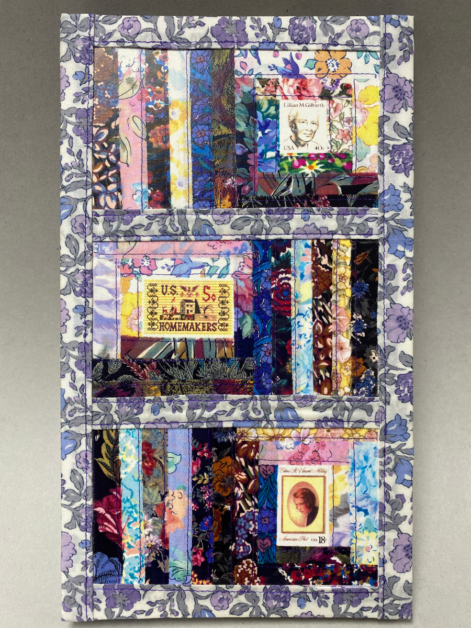
Sande James-Wascher has created this informative artist book using images of quilted fabrics, postage stamps and historical photographs from the Library of Congress, Oregon Historical Society, Smithsonian, and Sophia Smith Collection, Smith College. She constructed this flag book in concertina style, which opens to reveal twenty-one card leaves in three horizontal rows, each leaf with text/printed photograph on one side and illustration of a postage stamp depicting noted women of history adhered to a ground of printed patchwork on the other. Boards of printed patchwork imagery are bound with a floral lilac fabric border.
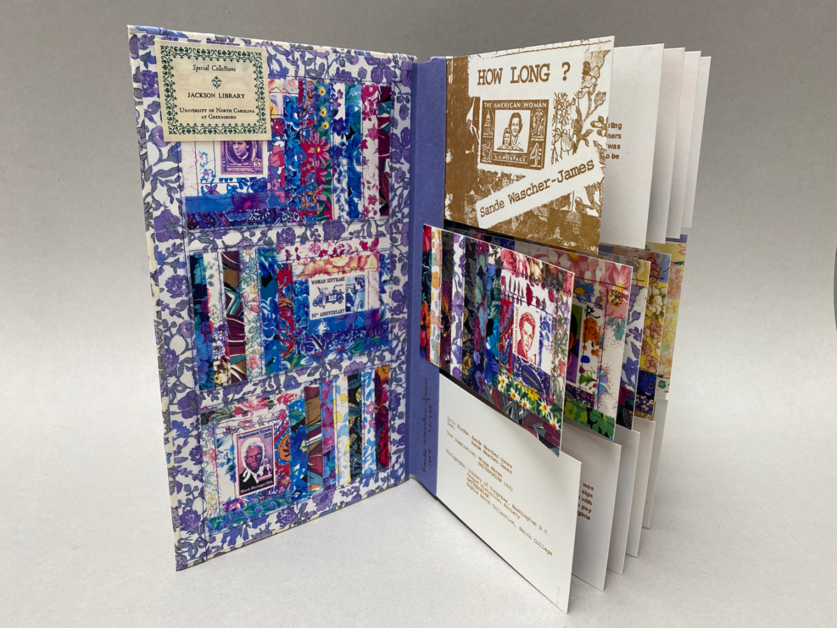
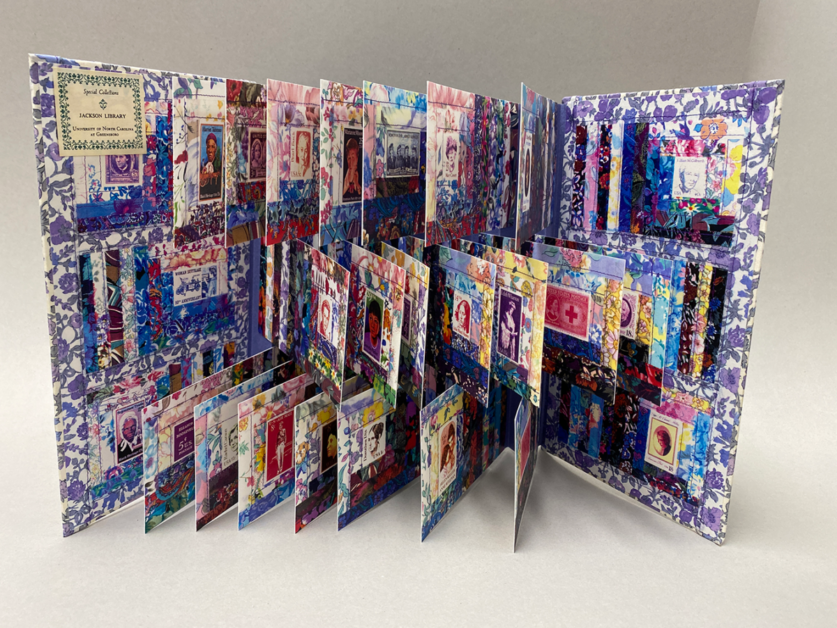
In this work by Sande James-Wascher, she focuses on women’s struggle for the right to vote. The text she uses was inspired by an article on women’s suffrage by Minna Morse that was published in The Smithsonian in 1993. The text in the artist book describes key individuals in the early 1900s who fought, picketed, and were imprisoned by men as they worked to be recognized as citizens who had a right to be involved in the choices for the running of the country’s government. As their fight intensified, so did the aggressive tactics used to try to silence these women. They were incarcerated in unsanitary conditions, force fed food that was infested with bugs, and some were beaten and cruelly handcuffed. Eventually, a year after the picketing began, Woodrow Wilson pushed through the woman suffrage amendment, and although it took until August 26th, 1920, for it to clear the Senate, it eventually became the 19th amendment to the U. S. Constitution.
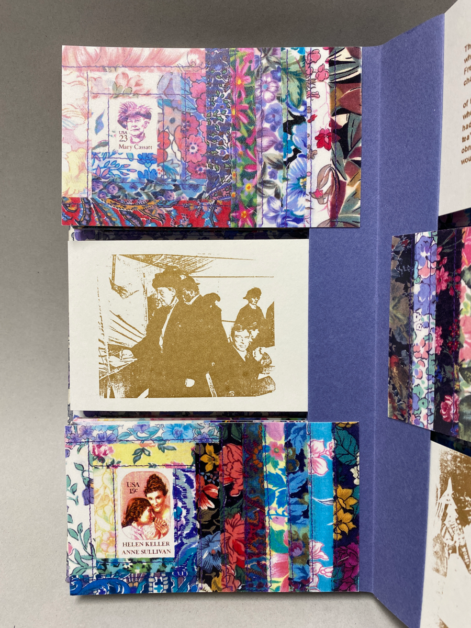
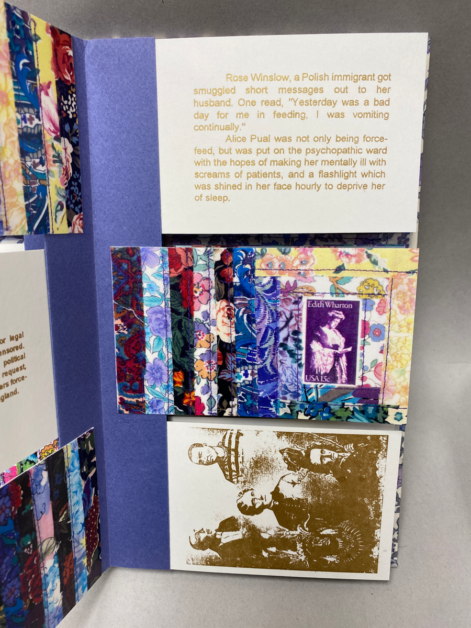
From the artist’s statement: “I seem to always manage to do labor-intensive work, and therefore have chosen to work to create what I feel will be something beautiful and that will bring pleasure. That does not preclude having a powerful message, as I deal with issues of importance to most women. Most of my work is done with what might be considered “women’s work”-embroidery, quilting, beading, etc. I do this intentionally to show that there is both merit and power to these techniques, and because I enjoy working this way. Since there is usually a historical context to my work, I include stamps of well-known American women in it to add another layer of meaning. The book formats that I use allow me to do pieces that are sculptural with strong visual images, as well as written components that are explored when the pieces are read.”
We are pleased to have this contemplative work in our collection and hope you find her work inspiring.